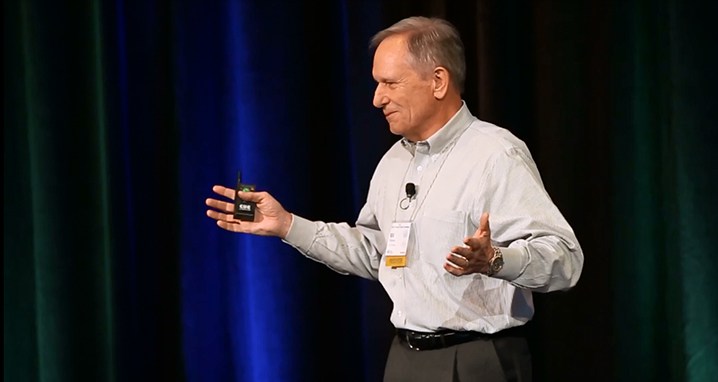We received our best audience feedback ever after the 3rd Annual Ultimate Culture Conference. For the first time, one specific speaker insight stood out and was highlighted by numerous attendees. What was this insight about leadership and culture? Why did it resonate so much? I think it’s a sign of the times as culture transitions from a subject of interest for many to the sustainable driver of effectiveness that many feel compelled to nurture, develop or change.

Create sustainable, high-performance cultures and impact the world.
How many of us like feedback? And how often does it help us versus make us feel disappointed or inadequate? Marshall Goldsmith has turned this technique on its head, providing a fun and helpful way to get answers to a problem or concern you are working on. Feedforward is a fun (yes, fun) and effective way to quickly get a lot of ideas around a challenge you’re facing.
“I don’t know everyone’s name. I’m embarrassed because I think I should know their names.”
When I interviewed the president of a big insurance firm, I didn’t realize that I’d strike a nerve so soon after our conversation began. This was years ago, but my recollection is powerful.
It’s amazing how many businesses are built or operate with antiquated, unorganized systems. Assess what systems you have that were learned, adapted, or created from previous workplaces. You must create systems for YOUR team, not just any team. You may be the boss, but when you keep your team happy, you get more done.
Leaders leave gold on the table by not showing appreciation for their people. It’s easy, it’s free, and it’s hugely impactful. Bottom line: Recognition gets results. And recognition builds relationships. And relationships get results. A positive, virtuous, reinforcing cycle.
In today’s competitive business environment, executives are not interested in investing money in company culture unless they are able to see results in terms of tangible business value. Working in the field of transformational leadership and large-scale change, I see plenty of consultants who do magnificent work but struggle with connecting the dots between the work they do and the ultimate value they will add.
People need to identify the gap between where they are and where they want to go. Defining that gap so others can clearly see it is the first step you need to take in consulting with them. Second, help them identify what they need to do to get to the other side of the gap. This can help them determine ways they can implement the change they desire.
Why are most leaders so comfortable with tracking results and, at the same time, so disconnected from understanding the health of their work culture?
What if you discovered the 4 elements that can provide profound success in your professional life? As an organizational leader, what if those same 4 elements applied to the increased success of your organization?
As the first culture-shaping consulting firm, Senn Delaney has quite literally made organizational culture its business. Larry Senn and his colleagues, including partner and executive vice president Bill Parsons, have brought their mission of “creating healthy, high-performance cultures” to more than 500 companies. Bill shared some of the knowledge they’ve gathered over their 38 years of experience at the 2nd Annual Ultimate Culture Conference—including the four principles that must be upheld to really shape culture and improve performance.
It’s been nearly three years since Merriam-Webster declared “culture” its 2014 Word of the Year, but it has yet to lose any momentum. Culture has become ubiquitous in the business world, with media giants from Forbes to CNN to Huffington Post regularly publishing articles on the topic. Numerous articles cite culture as a key contributor (if not the key contributor) to retaining top talent, and research shows an undeniable relationship between culture and financial performance.
But with the spotlight firmly placed on workplace culture, leaders and organizations often miss a crucial piece of the puzzle. Where are all the articles, posts, and interviews on climate?
What do you think when you hear the words “culture change”? More important, what do your baseline employees—the women and men who get the essential and routine work done—think when they’re first introduced to organizational culture change? Here are seven factors that, when discussed openly and honestly, will help the average worker in your organization quickly adapt to, and become a champion of, culture change.
Culture change is a human experience. It’s not just a business imperative, as it has been viewed for decades. For culture change to have a chance of becoming contagious, leaders should more deeply understand how business needs and the human experience of change can work in concert. Together, these two can help navigate change pitfalls.
There’s so much talk about culture these days. In fact, “culture” could once again be the buzzword of the year.
Here’s the problem: When most leaders talk about “culture”…they actually mean climate. So let’s define those two very different elements of the workplace.
Do you fully understand your culture and how it’s impacting performance? Are you managing a clear journey to effectively evolve your culture with a direct and sustainable impact on performance? There aren’t many leaders that can confidently answer “yes” to these two questions. We see culture tips and advice at every turn that range from superficial to endlessly complicated. If you are like me, it’s hard to understand what to believe.
It’s very important for leaders and change agents to learn from the culture pioneers and experts in this evolving field. Human Synergistics, therefore, convenes an annual Ultimate Culture Conference to bring visibility to important insights from culture trailblazers and progressive leaders.














